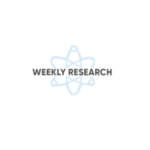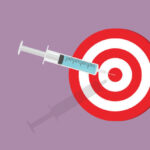Remote pulse oximetry monitoring effectively manages chronic respiratory diseases at home. Using connected pulse oximeters, blood oxygen (SpO2) levels and pulse rate can be regularly tracked with real-time alerts. These alerts allow early intervention by a physician when patients trend outside personalized thresholds.
This approach transforms care for chronic obstructive pulmonary disease (COPD) and COVID-19 recovery, where frequent oximetry checks better detect otherwise hidden drops in oxygen that signal worsening lung function. Recent studies reveal remote monitoring leads to improved control of symptoms, avoided hospitalizations, and reduced healthcare costs over time for these patient populations.
This article explores the critical role of remote pulse oximetry for patients and providers managing chronic respiratory illness. It details the capabilities of FDA-cleared monitoring devices, highlights five tangible benefits over standard care, and introduces Tenovi’s clinically validated platform, enabling any provider to seamlessly add remote monitoring to treatment plans for better patient outcomes.
What is Remote Pulse Oximetry Monitoring?
Remote patient monitoring involves using FDA-cleared medical devices from home to measure vital signs such as lung capacity and blood-oxygen levels. With remote patient monitoring (RPM), patients must take their vital sign measurements at least 16 days a month. In brief, pulse oximetry determines how well a patient’s lungs function by using a light that measures oxygen levels in red blood cells.
Blood-oxygen levels are typically tested at the fingertips with a pulse oximeter to measure how well oxygen is distributed to areas furthest from the heart. FDA-cleared pulse oximeters give clinicians accurate blood oxygen levels, pulse rate, and perfusion index to help develop patient treatment plans.
Pulse Oximetry RPM: Which Conditions Can be Monitored?
Monitoring blood oxygen levels for pulmonary diseases is essential to treat patients effectively. Because respiratory symptoms of COPD are not always noticeable, frequent monitoring of lung capacity or blood oxygen levels promotes early detection and timely treatment. For instance, patients with mild chronic obstructive pulmonary disease (COPD) symptoms can experience critical drops in blood-oxygen levels and not even know it.
Generally, a good saturation number (SpO2) is above 90-92%. A good SpO2 is over 60-65. The remote patient monitoring platform automatically alerts the clinician for quick intervention if a patient’s blood oxygen saturation level (SpO2) is under 90%. Remote pulse oximetry monitoring may be used for many clinical conditions. Some use cases include:
- COPD: Monitoring leads to early identification and prompt treatment, preventing symptoms from worsening.
- Congestive Heart Failure: Keeps check on low oxygen saturation, which is a common symptom.
- Asthma: When an asthmatic’s oxygen levels trend downward, it can indicate impending respiratory failure.
- Lung cancer: Used to predict cardiopulmonary morbidity after lung resection in cancer patients.
- COVID-19: Shows effectiveness and safety for monitoring lung deterioration at home.
Pulse Oximetry Devices: What’s Safe?
According to the FDA, two categories exist for pulse oximeters: prescription use and over-the-counter (OTC). COVID-19 caused a surge in pulse oximeter usage. Meanwhile, one study found that over-the-counter pulse oximeters can be flawed. For one thing, the risk of inaccuracy under certain circumstances can be dangerous.
This caused the FDA to issue urgent alerts warning patients and healthcare providers that OTC pulse oximeters have limitations. In addition, proper pulse oximeter placement varies by the type of device. Therefore, patients should always review the manufacturer’s instructions for how to take a proper measurement.
Below is a list of details of prescription vs. OTC pulse oximeters:
Prescription Pulse Oximeters
The FDA requires that these pulse oximeters undergo the following clinical testing to confirm their accuracy.
- Fully reviewed and cleared by the FDA
- Receive 510(k) clearance
- For use in hospitals, physician offices, and health clinics
- Available only with a prescription when prescribed for home use
Over-the-counter (OTC) Pulse Oximeters
It is important to note that the FDA does not clear these OTC oximeters and should not be used for medical purposes.
- Sold directly to consumers in stores or online
- This may include smartphone apps developed for estimating oxygen saturation
- Sold as general wellness products; not intended for medical purposes
- Do not undergo FDA clearance review
Effectiveness & Benefits of Remote Pulse Oximetry Monitoring
In particular, the key to effective management of chronic conditions is focusing on proactive care. Overall benefits of remote patient monitoring include making quality healthcare more accessible and convenient. In addition, RPM reduces the risk of hospitalization by focusing on preventive care. With RPM, patients are encouraged to engage in healthier choices because the results of their lifestyle choices can be evidenced in their regular biometric readings.
1) RPM & Pulse Oximetry Means Accurate & Reliable Data
Before remote pulse oximetry monitoring, patients had to log vital sign measurements and present them to their physician during an office visit. The data provided to a physician or other qualified healthcare professionals could be invalid and unreliable for several reasons, such as human error, missed medication, etc.
Accurate data is critical to reducing the risk of hospitalization by focusing on prevention over treatment. One study assessed the reliability of a remote patient monitoring system. The researchers reported that the device was ‘quite’ effective in providing accurate remote health data. They noted that the device functioned remarkably well among the geriatric population. In addition, well-designed systems have the potential to offer significant at-home support for seniors and chronic care patients.
Another benefit of remote monitoring is that remote patient monitoring services companies provide devices as well as qualified clinical staff that can perform RPM services to assist with managing patient data. The exact capabilities of FDA-cleared remote monitoring devices and HIPAA-compliant software platforms vary considerably. Therefore, it is essential to research connected health devices and software quality before choosing an RPM service company. Quality and reputation are critical for real-time monitoring, data accuracy, and analysis.
2) Improving COVID-19 & Chronic Condition health outcomes.
Ultimately, remote patient monitoring allows clinicians to monitor their at-risk patients between visits for optimal care. Regular monitoring also puts patients in better control over their health. Because respiratory symptoms aren’t always noticeable, frequent monitoring of lung capacity or blood oxygen level can promote early detection and timely treatment.
UC Davis Medical Center introduced remote patient monitoring for high-risk patients with Chronic Obstructive Pulmonary Disease (COPD). The program stemmed from research showing that among Medicare beneficiaries admitted to the hospital for COPD, 19.6% were readmitted within 30 days. Likewise, a 2022 systematic review published in the Lancet reported that monitoring COVID-19 patients’ pulse oximetry levels at home was deemed safe and could help pinpoint signs of condition deterioration.
3) Reducing Costs with Remote Pulse Oximetry
Chronic diseases are the leading causes of illness, disability, and death in the United States. Utilizing remote physiological monitoring can reduce emergency care use and hospital admissions. This significantly reduces healthcare costs.
The cost-effectiveness of RPM can be worthwhile in terms of a better quality of life. Healthcare IT News estimated that for every 500 high-risk Medicare patients with multiple chronic conditions, health systems could realize $5.2 million in annual cost savings. In addition, remote patient monitoring allows clinicians to manage more patients, efficiently using their time and resources while increasing revenue.
4) Remote Monitoring Shows Improved Patient Adherence
With traditional at-home vital signs monitoring, patients are not reminded to take regular readings. As a result, providers do not know if patients are compliant with taking measurements. Moreover, the time between the reading and a face-to-face visit with a provider is quite long, and their health might deteriorate during that period.
Remote patient monitoring improves patient treatment and medication adherence. A 2019 study found that chronic disease patients who utilized RPM devices had increased knowledge of their conditions and enhanced ability to manage their health and make care decisions.
5) RPM Pulse Oximeters: No Real Risks Involved
The American Lung Association best says the final benefit: there are no known risks or dangers of using an FDA-cleared pulse oximeter when a qualified healthcare professional reviews and monitors the values. As mentioned, there are risks associated with OTC pulse oximeters. If you have a problem with a pulse oximeter, the FDA encourages you to report the issue through the MedWatch Voluntary Reporting Form.
Tenovi Remote Patient Monitoring
Want to meet a better RPM experience for patients, physicians, and, most importantly, your team?
What Makes Tenovi Better?
- Better device accuracy
- Better cellular coverage
- Better data security
- Better device selection
- Better API integration
- Better fulfillment integration
- Better device diagnostics
- Better out of box experience
Tenovi serves companies interested in offering remote patient monitoring solutions to healthcare providers. Schedule your free demo and consultation today!






